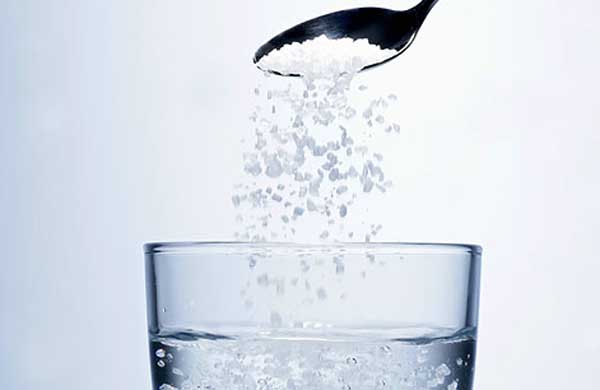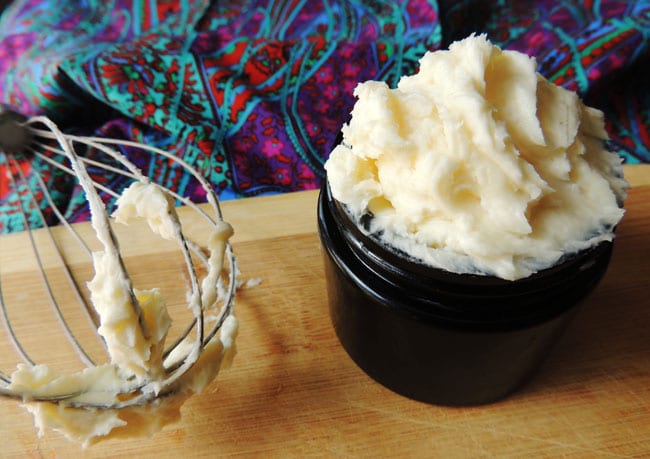Are you getting enough magnesium in your diet?

Don’t be too sure you are. Magnesium deficiency is very common. In fact, it may actually be pervasive.
Research suggests that around half of the US population may actually be getting less than the recommended daily amount of magnesium through their diets.
Jump to:
Why does it happen? There are a variety of culprits, but some common ones include:
- Having type 2 diabetes
- A GI tract problem like Celiac disease or gluten intolerance
- Habitual drinking
- Age (which impacts absorption)
- Too much calcium (a lot of multivitamins favor calcium over magnesium, which inhibits absorption)
- Industrial farming techniques, water filtration, and other trappings of modern life are actively removing magnesium from our diets
In short, a health problem may make you more likely to suffer from magnesium deficiency, but even if you are a perfectly healthy person in every other respect, you could still be getting insufficient magnesium!
Why Do You Need Magnesium?
Magnesium is awesome stuff! It’s essential to a number of different bodily systems and functions. It helps your body tap into the power of adenosine triphosphate (ATP), which gives you the energy to get through your day.
It activates nerves and muscles, and assists with the synthesis of brand-new DNA and RNA. It supports digestion and helps your body take in the nutrition you need from proteins, fats, and carbohydrates. It’s also a precursor to key neurotransmitters such as serotonin.
What is Magnesium Oil?
There are a number of different forms you can get magnesium in. You can eat magnesium-rich foods, take multivitamin containing magnesium, or even just take a standalone magnesium supplement.
There are also topical ways you can apply magnesium. Epsom salts are rich in magnesium and great for a soak—plus a ton of other benefits.
And then there’s magnesium oil! The name is deceptive, because it isn’t actually oil at all. It’s actually magnesium chloride which is suspended in water. The texture of the mixture happens to be oily, and thus the misnomer.
It does act as a lubricant thanks to the texture, though, so perhaps the name “oil” is still useful since it can be used for similar procedures.
Magnesium Oil Benefits
Why use magnesium oil? It has a broad range of applications, but some of the most common benefits of magnesium oil include:
- Alleviate aches and pains associated with arthritis, joint issues, and inflammation.
- Reduce the pain of injuries or overworked muscles.
- Fall asleep faster at night and sleep more soundly.
- Boost energy levels, both by helping you sleep better and longer at night, and by activating ATP in your body.
- Relieve headaches, especially migraines and tension headaches.
- Reduce the symptoms of restless leg syndrome (RLS).
- Treat eczema and other skin conditions which cause inflammation and pain.
- Relieve PMS cramps and other discomfort associated with your monthly cycle.
- Replace your deodorant. Many users of magnesium oil say it works just as effectively, if not even better.
- Helps to balance your hormones.
- Improve gum health (by swishing it around in your mouth).
- Reduce muscle spasms and associated pain.
- Relax and relieve stress and anxiety.
- Improve your overall health. Every cell in your body makes use of magnesium, so there are few better ways to give your entire body an instant overall boost.
Magnesium absorbs very effectively through the skin, so the oil is a particularly effective way to take advantage of all of the benefits!
Try These Simple Recipes to Make Your Own Magnesium Oil!
While you can buy magnesium oil from the store, you can also make it yourself at home to save money. It should be just as effective if you formulate it right and apply it when you need it.
Recipe #1: Easy and Basic

All you need for this recipe is half a cup of magnesium chloride flakes, and half a cup of distilled water.
You boil the distilled water (it is really important that it is distilled!), then put the flakes in a glass bowl or measuring cup. Pour the boiling water over the flakes, and stir until the flakes have dissolved into the water. Wait for it to cool, then add it to a spray bottle. You can store and use this mixture for up to six months.
What if you don’t use distilled water? The mixture will still work, but the shelf life will be a lot shorter. Distilled water lets you use it longer!
Recipe #2: Epsom Alternative

If you don’t feel like purchasing magnesium chloride flakes, you can pick up Epsom salts instead. Epsom salts are a lot cheaper, which is one reason you might try this alternative.
Epsom salts do not have as long-lasting or potent an effect as chloride flakes, but depending on your budget, they may still be the better idea. Plus, maybe you just want a way to take an Epsom salt “bath” without the “bath” part!
Making this mixture is very easy. Mix equal parts water and Epsom salt in a pot on the stovetop.
Heat up the pot so that the Epsom salts can dissolve into the water. After waiting for the mixture to cool, transfer it into a spray bottle. You can use it the exact same way you use the original basic recipe above with the magnesium chloride flakes.
Recipe #3: Coconut Oil Body Butter with Magnesium Oil

If you want something a little more luxurious, you can try this exciting recipe for DIY whipped coconut oil body butter with magnesium oil. For this treat for your skin, you will need the following ingredients:
- ¼ cup organic extra virgin coconut oil
- ½ cup unrefined cocoa, mango, and/or shea butter
- ¼ cup magnesium oil (you can use the oil you created using recipes #1 or #2 above if you wish)
- Essential oil of your preference (optional)
To make this recipe, you will begin by melting the coconut oil and whichever butter you chose over low heat. Pour them into a medium sized bowl after they melt and let them cool for half an hour.
When they begin to turn opaque, you are ready to grab a blender and start whipping them.
While you are doing this, begin adding the magnesium oil. Do it gradually, and keep whipping everything as you go. Add any essential oils you choose at this juncture.
Once you are done, you can put the mixture in your fridge.
Wait around 20 minutes, then pull it out. If it has reached the point where it is semi-solid, you can blend it again.
At this point it should take on a perfect fluffy texture. You can then put it in a glass jar and store it in your fridge. Why does it need to be refrigerated? If you store it out on the counter or in your cabinet, it may melt and start losing the whipped texture.
This stuff should hold for a few months before you need to whip up a new batch. Kudos to Kayla for inventing such a great recipe. If you’re trying to alleviate stress, you may as well really pamper yourself, and this is the way to do it! Recipe idea from Radiantlifecatalog Coconut Oil Body Butter with Magnesium
How Do You Use Magnesium Oil?
You can spray on magnesium oil or rub it on; how you apply it is up to you. You should know though before you try it that you can expect a “tingling” sensation. The word “tingling” here is a bit of a euphemism.
It’s really more of an outright stinging. For that reason you should check on a small patch of skin before you apply the stuff liberally to make sure that you’re up for it.
If this sounds unpleasant, try not to worry about it. Over time, as your body becomes used to the magnesium and your stores finally start building up again, the stinging sensation should lessen. The other good news is that the “tingling” doesn’t really stick around. It may hurt for a few minutes after you apply it, but once it soaks into your skin, the sensation should go away fairly quickly.
Here are some other tips for applying your homemade magnesium oil:
- Steer clear of sensitive areas unless you specifically need to spray on those areas. Areas with fatty tissues like the belly, hips, and thighs are going to be prone to extra stinging. Also steer clear of the neck if you can, as well as creases in your skin.
- If you have just shaved an area, try to wait around 12 hours before you apply magnesium oil there. That skin is already irritated, and will react unhappily to the addition of a new irritant.
- If you dry-brush your skin to increase your circulation, again, wait around 12 hours before you use magnesium oil. Your skin is extra-sensitive after dry-brushing.
- Give your body at least half an hour to absorb magnesium oil before you hop in the bath or the shower.
- If you notice a white film or powder on your skin after applying the oil, don’t freak out. This is perfectly normal, and it should be easy to wipe it off.
- Note that you can pour this stuff straight into your bath, just like when adding Epsom salts. This works great for a soothing soak after a hard day’s work.
- If you have naturally wavy hair, you can spray a little into your tresses to get beachy waves.
- And don’t forget, you can use magnesium oil as a natural deodorant.
Now you know all about the wonders of magnesium oil and why it is all the rage right now! This really is one of the most cost-effective and useful home remedies you are ever going to find. It’s great to relax, de-stress, soothe aching muscles and irritated skin, sleep better, and so much more.
Enjoy the easy recipes above, and be sure to share your own DIY magnesium oil recipes, tips and tricks with us in the comments below!






sandra
ya sabia de el magnesio, yo lo tomo en capsula para los dolores musculares y ahora lo puedo hacer en spray gracias
orlando lezcano
Muy inersante ojala se escribiera en español, gracias
John E. Beach
Adding some grape seed extract (oil) to the coconut oil, coco butter/mango butter/shea butter w/magnesium oil should prolong the freshness as grape seed extract is a natural preservative. I'm making some for the women in my family this evening. Thanks for the recipe. 🙂
Bert
Okay I made the one with Epsom salts to try an have used it about a week now and I highly recommend it. My foot swelling is gone but I also feel better that I have in some time including my joint and muscle pain from my autoimmune condition. I guess I had fluid retention all over as I can now see and it's now gone! I use Nexium and that can lower the magnesium levels I now know. Magnesium oil is supposed to be good for lowing sugar levels so we'll see next blood test as I have been a little high but not diabetic yet. My blood pressure which never has been a problem has gone down from 113/69 to 102/69. So folks with high blood pressure may want to try this too. Supposed to be good for depression so another bonus. Epsom salt is cheep so why not give it a go? I found it a little drying so I'll next try the magnesium flakes as it's a bit better they say and I could always make double strength and add some aloe juice to mine and some essential oils for my hubby's sensitive nose as he don't care for the smell to much.
Doreen A.
Thank you for sharing...❤️
heather
how do you use the magnesium oil ? is it for topical use or do you ingest it?
Catrise Paige
I use it as an after bath/shower spray. Spray it all over and rub in until dry. It helps with energy, joint and muscle pain and insomnia. My circulation is greatly improved also.
ALAN Langley
Hi just a hint I have been rubbing Magnesium oil on the surface veins on my ankle and they are getting fainter. thank you .
Gennie
Thanks for that. Going to give it a try.
Sherl
WILL DEFINITELY TRY THST
keren
hello
i really like your butter blend but to keep it in the fridge is a recipe to be unused in my house
so my question is what if i add organic arrowroot or corn starch will that keep it solid?
thanks
Robeil
In the magnesium oil recipe with the magnesium chloride it says to use only distilled water, whereas in the mag oil recipe with Epsom salt there is no specification of which water to use? Does it make that much of a difference? I just don't have distilled water on hand...
Kali
You can use tap or bottled water, but the shelf life will be shorter than if you used distilled water.
Marie Gelland
I use magnesium oil everyday now since a dear friend of mine suggested it. Easy to spray and rub into your skin. My only "complaint" would be that after it has dried, my skin, particularly the legs, have like dry "fish scales" left on them, as if I have extremely dry skin. This means I have to put body lotion on the legs 3-4 times per day to keep the skin smooth. Is this normal? Can I add something to the oil mixture to avoid this?
Any feedback would be helpful. Thank you.
Anonymous
the article says you can take a shower after 2 hours...
so that would clean that dry stuff off
Anonymous
You don’t have to wait 2 hours! Just 30 min. ?
Anonymous
I spray it on the bottoms of my feet
Thijs van oort
Is it absolutely necessary that the water is boiled/ heated? I don't when I make it and the salts just melt into the water. So that is not it (?)
Janice Burdick
Hello! I was so happy to find (this) your site. You provide WONDERFUL information that people need to know! I do have a question for you, however:
In Recipe #1, you say that DISTILLED water is needed. However, from what I've researched in regard to distilled water, it actually ABSORBS all medicines, etc. (Which is why you are only supposed to drink distilled water when performing a cleanse....so that it can absorb any chemicals/toxins/metals and remove them from one's system...pretty much the same way that charcoal absorbs toxins, etc.)
So then, wouldn't combining distilled water with the magnesium flakes, actually PREVENT the magnesium from being absorbed into the skin?
Thank You
CARL
Using distilled water actually leaches vitamins and minerals from you cells to some degree.. However, since you are using a small amount it will not change much of anything If you are doing a cleanse or detox just make sure you take your multi vitamins every day...
Salli
This is a great article. I never thought about using epson salt to make the mag oil.
We live outside the US so need to be careful what is brought in.
I have a suggestion about melting coconut oil, if it is hard,.
I never melt coconut oil. I put it in a bowl along with small chunks of shea butter & my husband whips it till thoroughly blended. This works great. Then I add anything else I want in it. This saves a lot of unnecessary steps.
Sadiegirl
Has anyone tried including camphor oil, eucalyptus oil, and/or peppermint oil to the magnesium oil? I’m looking for a icy hot kind of magnesium effect all-in-one. My sons and I struggle with daily myofacial & joint pain. Just concerned about this combination burning the skin
Sadiegirl
Also, want to include grapeseed oil in the combination I asked about above. What type of oils will be most potent? Is the grapeseed skin oil the same as cooking or essential??
Patty
Thank you for these recipes for magnesium spray. I am sooo glad that I found this page. I am going to make recipe #1 and give it a try. I am also going to make the cream. Again Thank you.
judy
would solubol work for suspending eo's in magnesium oil?